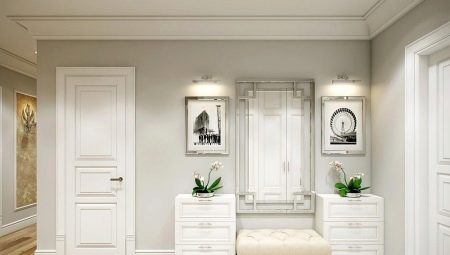A beautiful and comfortable entrance hall always makes a favorable impression on the person entering. This room is a kind of "face" of the house, which before other rooms appears before the guests. Light tones not only expand the space and make the corridor better lit, they create an interior that speaks of good taste, gives the impression of purity, freshness, grace.
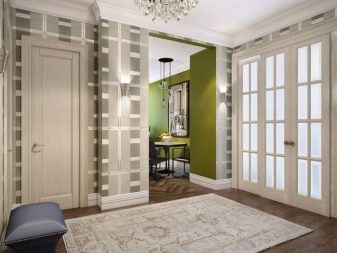
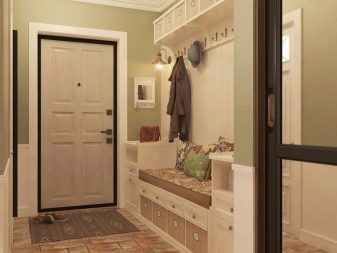
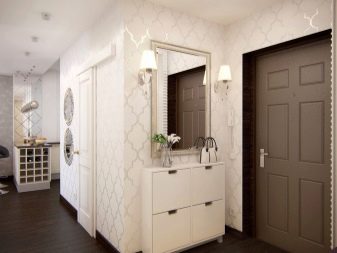
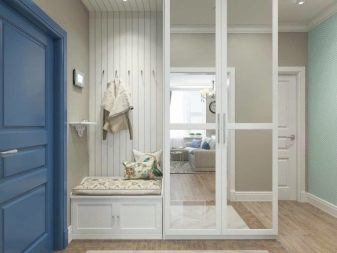
Light decor, with all its versatility, has certain features that must be considered before starting repairs.
Advantages and disadvantages
In any design magazine, you can see many design options for a bright hallway. This is a very common design decision, whose main feature is the visual expansion of the boundaries of space. Light colors make the room bigger, bring the illusion of solar warmth or fresh coolness. This advantage is the main one, since the corridors often have not just a small, but a small area, do not have window openings. In addition, there are other advantages of light design:
- good opportunities for zoning, it is enough to use visual techniques, for example, wall decoration in a contrasting shade;
- the lighter the entrance, the less lighting it needs, you can save on artificial light sources;
- light shades well hide defects, irregularities, smooth out the errors of architecture;
- combining shades with light palettes is easier than with dark ones, so picking up details, accents, furniture will be easier;
- light colors - the perfect backdrop for the decor, everything will look expressive on them;
- light neutral tones and pastel have a beneficial effect on the human psyche, balance the emotional background, do not irritate and do not oppress;
- the versatility of a light shade allows you to design a hallway in almost any style, with the exception of the Gothic;
- the relevance of this design will stand the test for decades;
- the exquisite impression that the entrance will make on the guests will be indelible.
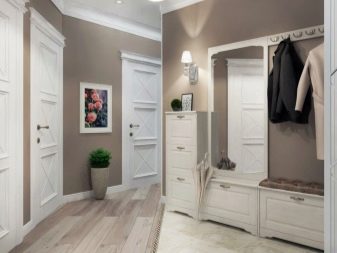
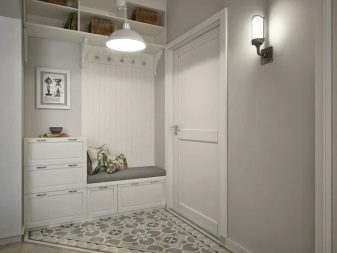

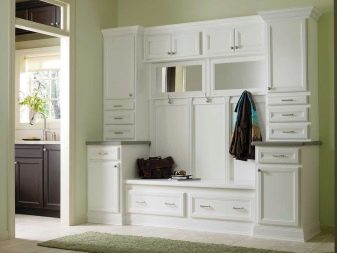
There are some drawbacks that, for all their relativity, you must consider:
- excess white will make the room “sterile” and uncomfortable, so you need to use harmonious combinations of tones;
- light shades are not very practical, but in the hallway this quality comes to the fore, you need to make sure that the materials are durable, durable and easy to clean.
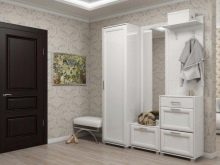
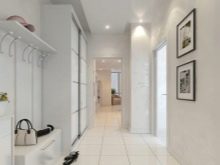
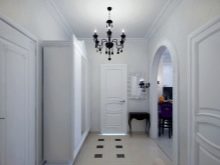
Color spectrum
The choice of shades for decoration is the central task in creating a design project. Moderation must be observed so that the composition is harmonious and demonstrates the good taste of the owners. If the hallway is not too big, limit yourself to a three-color reception, when a certain tone is taken as the basis, an additional and accent is selected for it.
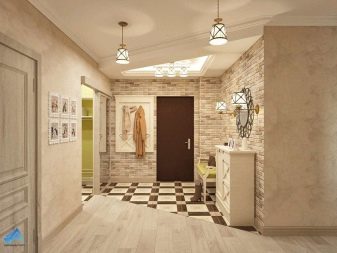
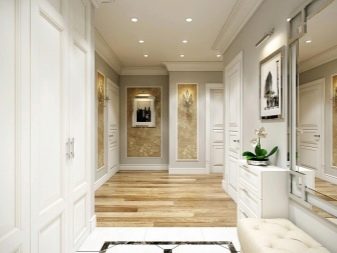
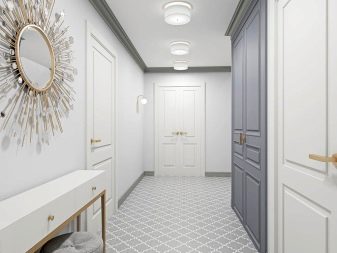
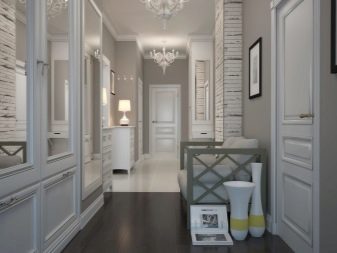
In a very small corridor you can limit yourself to two tones. This design decision looks harmonious when the basic shade is as light as possible, the additional shade is used in lesser amount. Decorative details are presented to a minimum and are the most expressive in the composition.
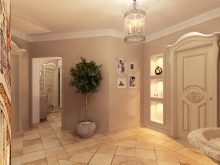
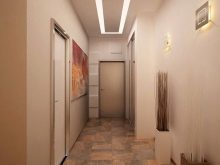
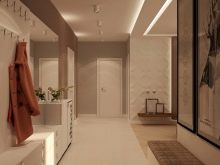
Here are the most popular scales for decorating the hallway.
Snow-white. With this popular palette, you need to be careful, despite its obvious advantages. White is very beautiful, classic color, appropriate in almost any interior. He is expanding the room. But in abundance it turns the room into a state one, uncomfortable.
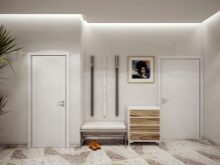
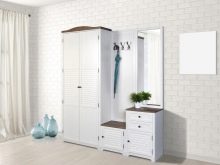
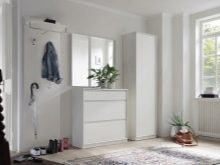
It is necessary to dilute the achromatic composition with black, gray or other tones.
Beige. This palette is also very light, but it creates a design in warm colors, therefore it is more comfortable. Shades of beige colors can be perfectly combined with each other and contrasting palettes. Ivory, sand, cream, creamy look status and respectable. It is best to include natural shades in a combination to them: muted green, brown, chocolate, wenge.
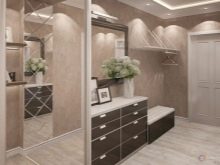
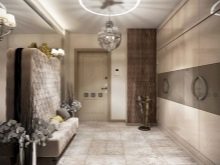
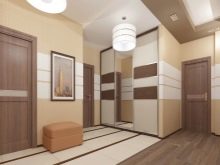
Gray. This color is neutral, versatile, suitable for different styles. The restraint of gray can balance any, even the brightest contrasting neighborhood. Conciseness, nobility and aristocracy make gray one of the most winning tones for the hallway. Mirror, glossy, metal surfaces, silver, steel are well combined with it.
In excess, gray can be boring and tiring, so you need to add more lively textures and shades to the composition. Pearl blue, soft pink, lilac are perfectly combined with a gray background.
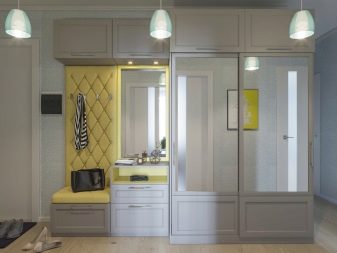
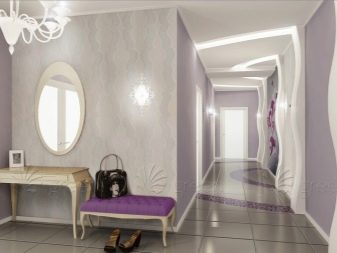
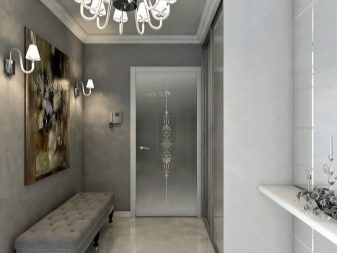
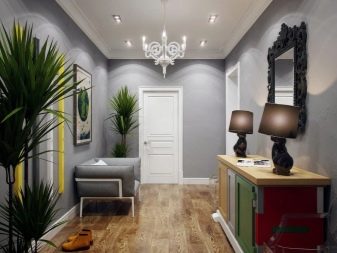
Pastel. This group of shades is very diverse, but all tones are soft, muffled. They are bright, unobtrusive and therefore perfect for decorating a bright corridor. This palette includes: delicate rose, lavender, faded lemon, pale blue, mint, peach.
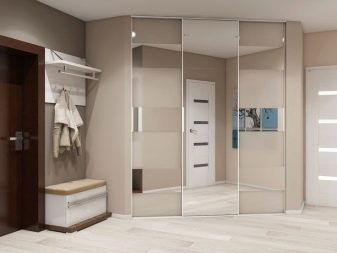
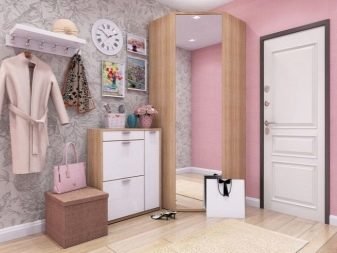
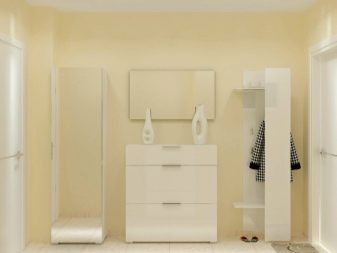
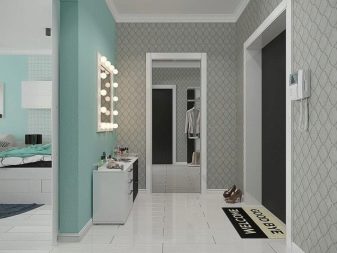
Especially comfortable these shades feel in the style of Provence, shabby chic, but are successfully applied in other directions.
Style solutions
To create a single ensemble in the apartment, you must adhere to the chosen style. In accordance with the style, color, furniture, decoration materials, decorative elements are selected. Ideally, interior and exterior doors should be installed in accordance with the concept. Light gamut is appropriate in different styles, but you must also take into account the size of the room. The smaller the corridor, the more concise and simple the design should be. There are directions in which light shades look especially harmonious.
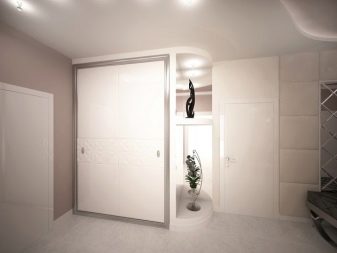
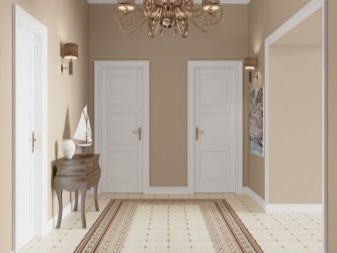
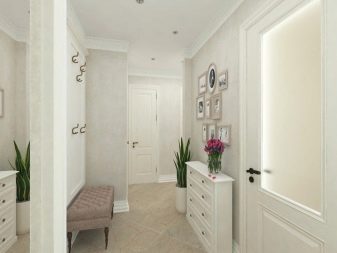
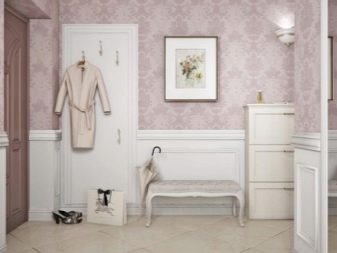
Modern style
In this direction, the emphasis is on functionality and elegance. Characteristics:
- sharp lines;
- strict silhouettes;
- neutral contrast combinations;
- high-tech materials;
- minimal decor or lack thereof.
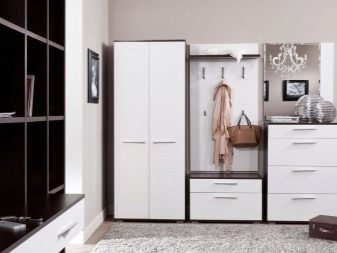
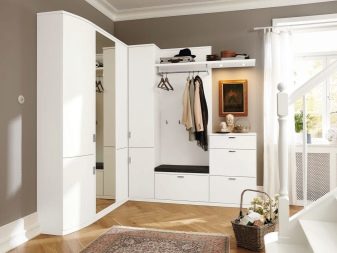
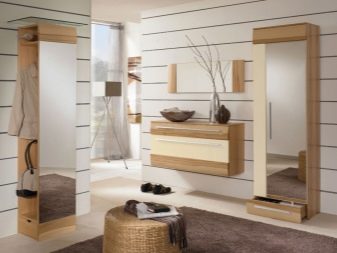
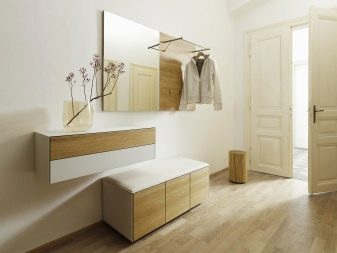
Classic
Such a hall is not only refined, but also respectable. It creates the impression of wealth, well-being. Features of the classics:
- symmetry;
- correct form;
- light beige, snow-white with the inclusion of gilding;
- lack of contrast;
- expensive, natural materials;
- expressive textures and decor.

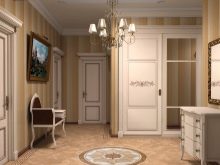
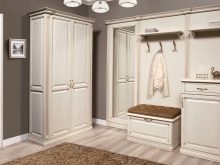
Provence
This style can be called both romantic, gentle, bright and airy. The style of the French province has a number of features:
- muted pastel gamma, a complete lack of contrast in the design;
- floristic motifs, lace;
- a lot of textiles;
- simplicity and tenderness in the decor.
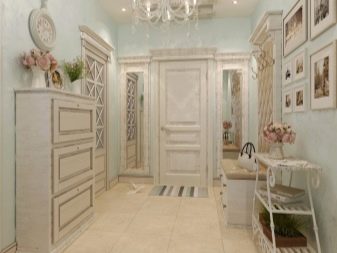
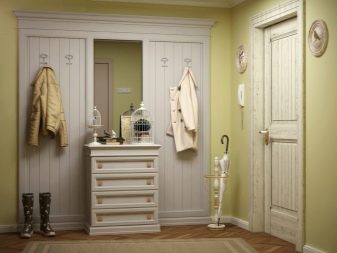
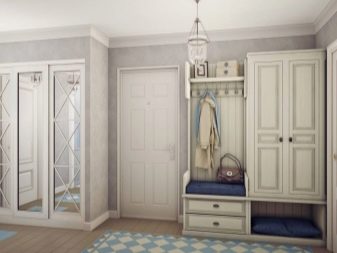
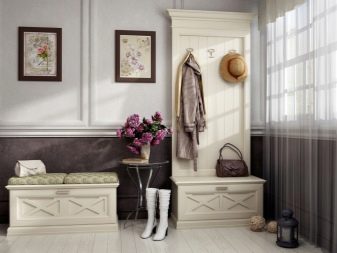
Loft
Industrial uncomfortable style is very in demand due to its originality. It is distinguished by:
- rough finish: plaster, brickwork, unfinished wood;
- beams on the ceiling;
- open communications;
- lack of fanciful details;
- furniture can be replaced with hooks or a rack.
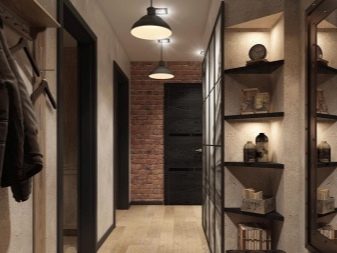
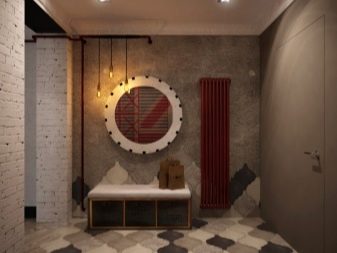
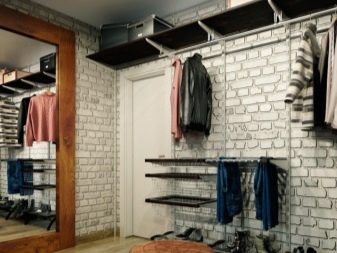
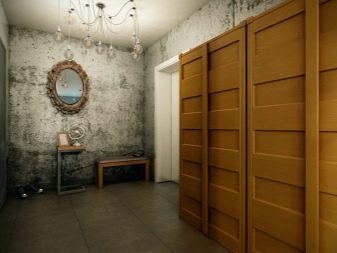
Scandinavian
This northern austere style is very cozy, despite its restraint. Specific traits:
- light neutral gamut (white, gray) is complemented by the warmth of greenery, the coolness of blue and several bright details;
- bleached wood furniture, simple but high quality;
- concise but noticeable decor, for example, a multi-colored floor mat.
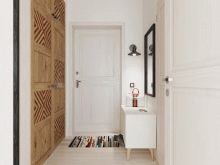
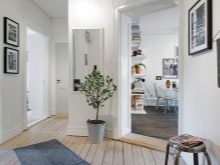

The hallway in the Japanese style, Art Nouveau, Art Deco and others also looks good in light variations.
Finish options
The entrance hall is not the wettest room in the house, but all the dust and dirt settle in it. The moisture resistance of materials, therefore, can be medium, but ease of cleaning requires the highest. Especially if the hallway is bright.
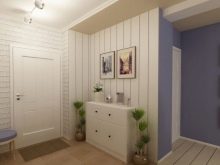
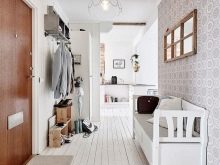
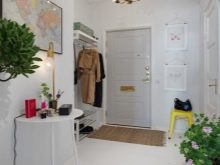
When choosing materials for finishing, give preference to smooth surfaces - they are easier to wash.
Floor
The coating must be durable, therefore ideal solution - tile from a tile, porcelain tile. A practical and comfortable solution is high-quality linoleum. If funds allow, you can make a bulk floor. Laminate can only be selected high quality, with special impregnation. Parquet for the hallway is not suitable due to its fragility.
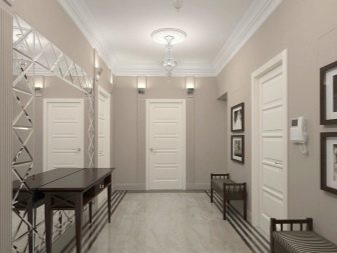
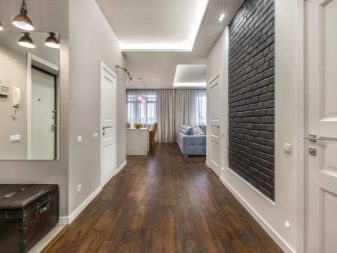
Ceiling
Everything here can be arranged as simple as possible - a smooth white ceiling is always relevant. It can be finished with drywall, tiles, stretch canvas or simply plastered, painted. The most common option is stretch ceiling. If the hallway is large, you can make them layered. Perimeter lighting fits perfectly into the modern interior.
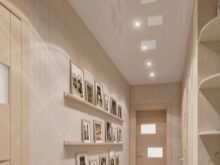
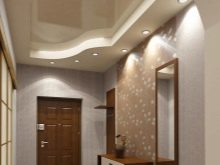
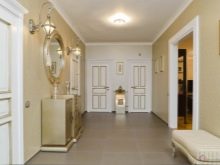
For a small hallway, gloss is better. In classic and retro styles only matte canvas is used.
Walls
The most popular wall decoration option is wallpaper, decorative plaster. Wallpaper must be selected washable, durable, paper will have to be abandoned. Wood panels, artificial stone in the decoration of the walls, imitation of bricks, cork decor, photo wallpaper perfectly complement the composition. In the hallway it is best to use plain materials or with an unobtrusive pattern. Large, expressively lurid ornaments are contraindicated for corridors.
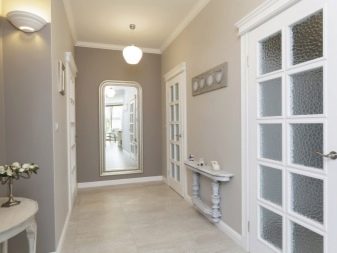
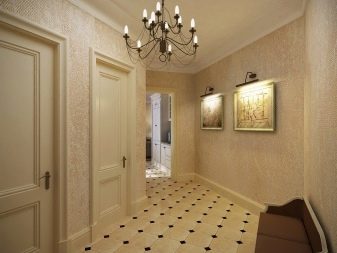
Be sure to consider the general style of the hallway when choosing materials.
Besides, it is very important which doors will be installed (both entrance and interior). First of all, they must match the style of the apartment. For modern interiors, laconic, strict models with simple fittings are optimal. The ideal solution is white doors, but it should be borne in mind that if the overall composition is made without turning on snow-white, it is better to dwell on other shades: beige, light wood. Bleached oak is a very popular solution for different stylistic trends.
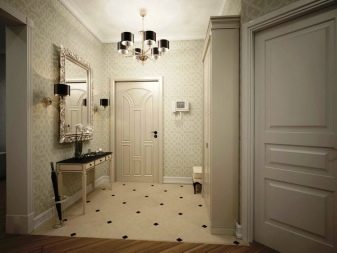
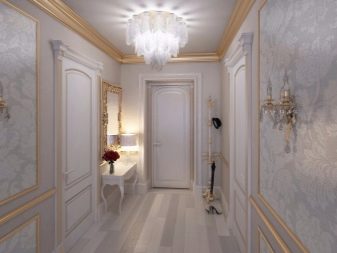
Furniture Items
Uncomfortable furniture will not save any interior, therefore, especially in small corridors, you need to approach her choice with the greatest responsibility. Bulky cabinets should be abandoned, replacing them with lightweight built-in designs. There is a basic set of furniture that is needed in the hallway:
- a closet for storing clothes;
- cabinet or shoe rack (can be built into the cabinet);
- mirror;
- bench or pouf.


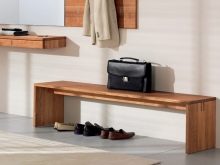
Depending on the style, area and need, this list may vary and be supplemented:
- chest of drawers;
- stand for umbrellas;
- a hanger;
- dressing table;
- armchairs.
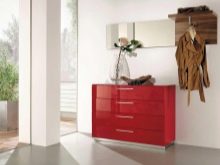

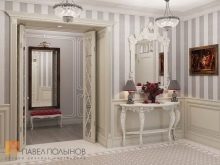
The centerpiece of the interior is the closet. It is optimal to order furniture, taking into account the characteristics of the room, shape, size. A modern variety of materials, decorative elements allow you to make a built-in wardrobe in almost any shade and style. The perfect solution is the mirrored doors. They will perfectly increase the space in the hallway and add to it volume, depth.
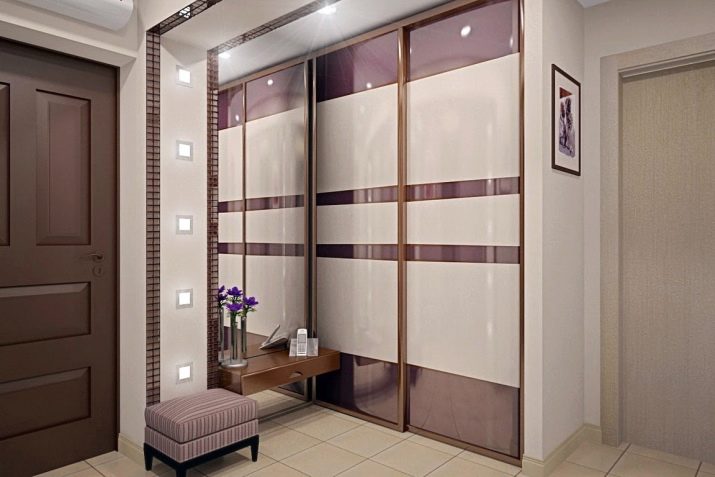
Lighting
The corridor is most often not equipped with a window opening, so there is no source of natural light in it. therefore even the brightest hallway needs competent lighting organization. Spotlights in the ceiling around the perimeter, in the cabinet and near the mirror will fit perfectly into the modern design concept. For classic and retro options, you can consider the central chandelier in combination with a sconce on the walls. The chandelier is optimal in the ceiling type, suspended structures for the corridor will not work. You can draw up the floor lighting, if possible.
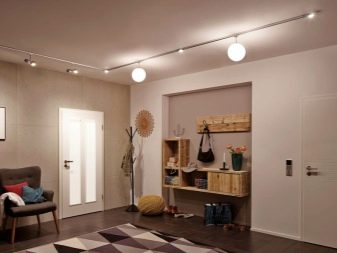
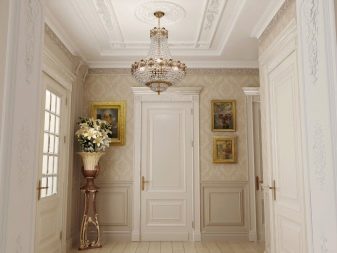
It is better to use cold light to illuminate the mirror, and warm to use for general lighting.
Interesting examples of interior design
Laconic light design without contrasting details looks elegant and expensive.
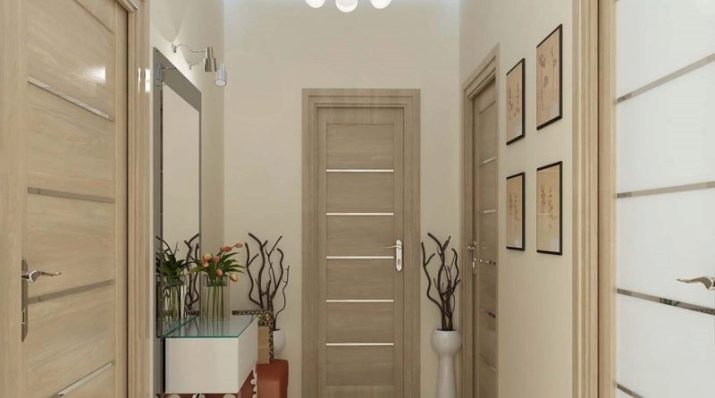
To make the white hallway uncomfortable, add a bright detail to the interior.
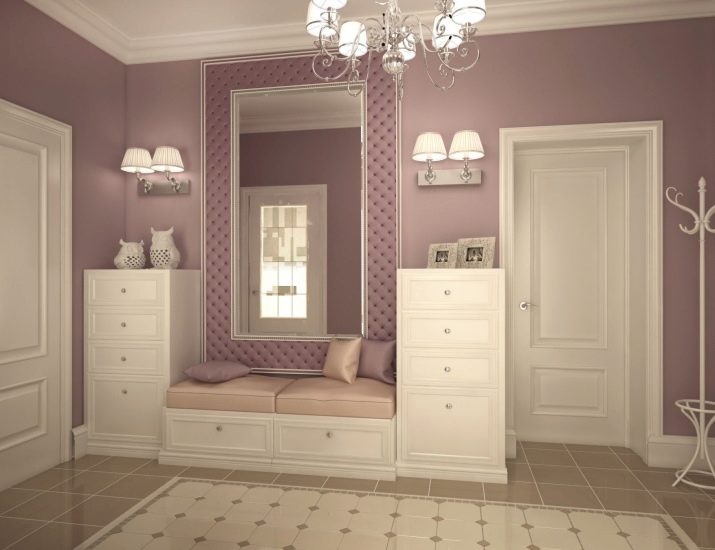
The light design in classic style is the perfect solution for a large corridor.
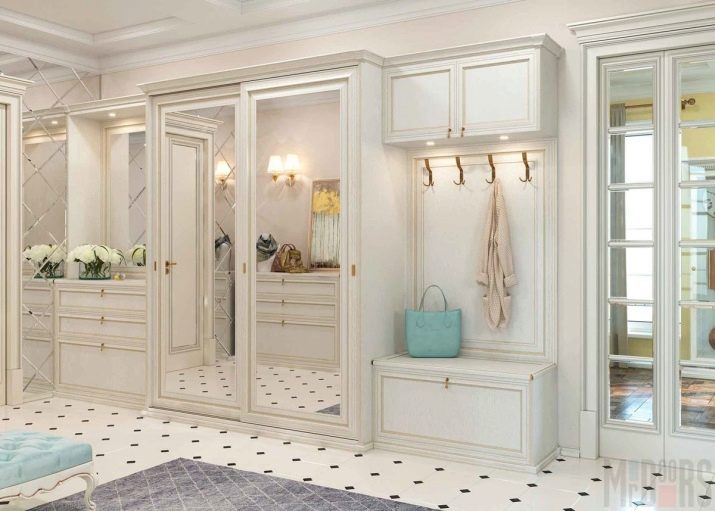
It is not necessary to “play” with color, expressive textures can diversify the composition.
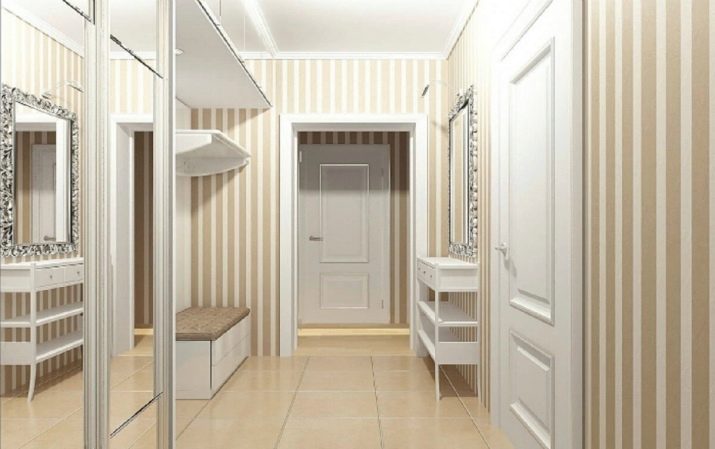
Gray range allows you to create a luxurious respectable design.

Warm creamy cream finish looks incredibly cozy and comfortable.

A light tree is ideally combined not only with a beige palette, but also with muted pastel, for example, in a pink version.
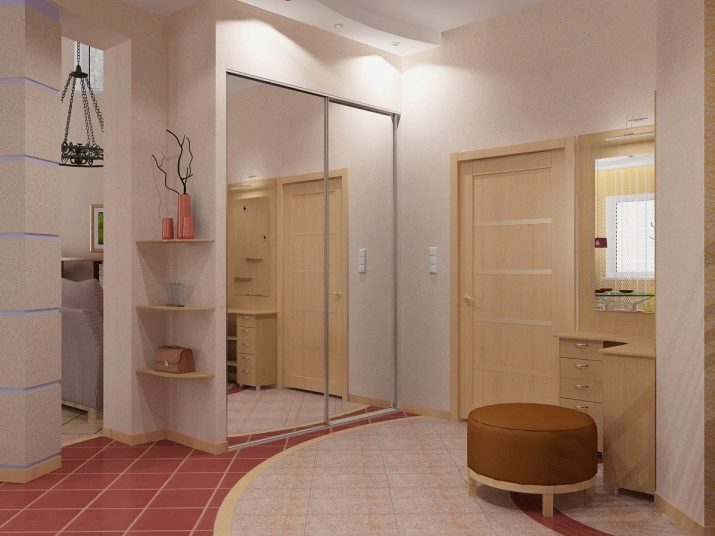
Several bright details will revive any, even the most ascetic interior.
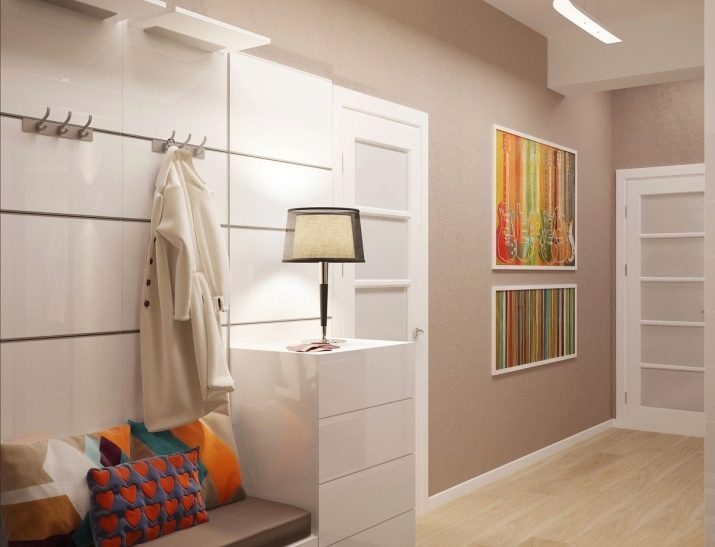
Creating the interior of the hallway, be sure to think about how it will look in the company of adjacent rooms at home.

